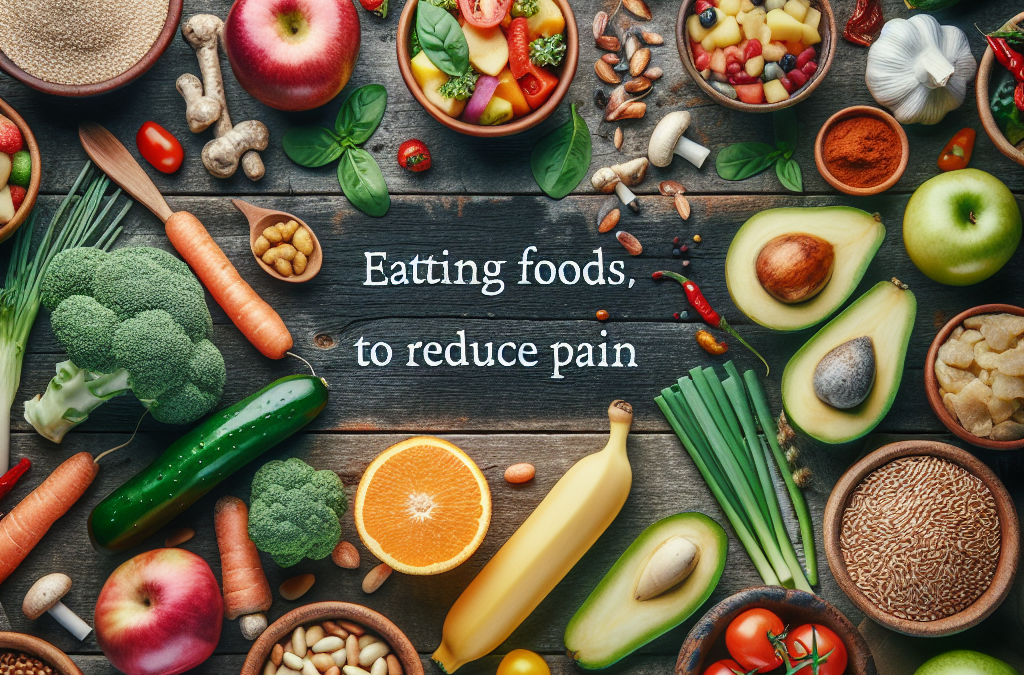Hey there! So, let’s chat about this topic that hits home for a lot of us—joint health. Over the years, I’ve stumbled upon some pivotal ways to support my joints, mostly through food. It’s amazing how what we put on our plates can influence pain and inflammation. So, I’m going to break it down into five areas that have really helped me along my journey. Let’s dive in!
Anti-Inflammatory Foods
Understanding Inflammation
First off, I learned that inflammation is like your body’s natural response to injury or infection. But sometimes, it goes haywire, leading to chronic pain and discomfort. By choosing anti-inflammatory foods, we can help calm that raging fire! Foods like berries, fatty fish, and leafy greens are the real MVPs in this category.
What’s super cool is that these foods don’t just taste great, but they’re packed with antioxidants. These little warriors help fight free radicals in our bodies—thousands of health-conscious friends have sworn by them! When I started adding more berries to my smoothies, I noticed a positive change, both in energy levels and joint comfort.
So, if you’re looking for a game changer, think about stocking up on spices like turmeric and ginger. They are potent anti-inflammatories that can add amazing flavors to your meals while working hard to keep your joints happy!
Healthy Fats
Why Fats Matter
Next up, let’s chat about healthy fats. It sounds a bit quirky, but trust me—it’s super important! Fats can be your friend when they’re the right kind. Olive oil, avocados, and nuts are not just delicious; they contain omega-3 fatty acids that can help reduce inflammation.
When I shifted my cooking oils from butter to olive oil, I felt a noticeable difference in my joint comfort levels. It’s like my body finally had its vitamin D fix! Plus, healthy fats help absorb nutrients better—so it’s a win-win!
Don’t overlook the magic of fish, especially salmon. It’s a fantastic source of omega-3s, and grilling up some of this flavor explosion is a great way to treat your taste buds while doing your joints a favor!
Whole Grains
The Power of Fiber
Whole grains are another big player I’ve come to respect. Incorporating whole grains like brown rice, quinoa, and oats into my meals was life-changing. They’re not just filling; they also keep blood sugar levels steady and provide fiber that helps in reducing inflammation overall.
I remember switching my breakfast from processed cereal to oatmeal topped with nuts and berries. It kept me satisfied longer and energized for the day ahead! The plus side? When you fill up on whole grains, you’re generally less likely to crave those pesky processed foods that can lead to weight gain and joint issues.
Also, don’t forget about the variety! Try experimenting with different grains. Quinoa bowls are a great way to pack in the nutrients while getting creative with your meals.
Hydration Matters
Water and Joint Health
I can’t stress enough how important staying hydrated is. Water isn’t just for quenching thirst; it plays a crucial role in joint lubrication. I’ve felt the difference on days I don’t drink enough water—like my joints get all stiff and cranky!
Get an Amazing Discount on the Best Certified Organic Whole Food Supplement!
Besides plain old water, herbal teas and high-water-content fruits and veggies can boost your hydration game. Think cucumbers, watermelon, and celery! Including these in my daily intake was a no-brainer and made hydration a fun experience.
Remember, it’s about consistency. Aim to sip water throughout the day rather than gulping it down all at once. It’s a small change that has made a world of difference for me.
Vegetables Galore
Color Variety
Last but not least, let’s talk veggies! Filling your plate with a rainbow of colorful vegetables is one of the best things you can do for your joints. Each color represents unique nutrients that contribute to overall health—kale, bell peppers, broccoli, you name it!
I started making it a goal to have at least three different colored veggies at dinner. It didn’t just brighten my plate, but I felt so much better physically. Vegetables are loaded with vitamins, minerals, and antioxidants that can help manage inflammation, making them a total powerhouse for joint health!
Plus, they can be prepared in so many delicious ways—roasted, steamed, or sautéed. So, get creative, and don’t let that veggie fear stop you from reaping the benefits!
Frequently Asked Questions
1. What are the best anti-inflammatory foods?
Some of the best anti-inflammatory foods include berries, fatty fish (like salmon), and leafy greens. Incorporate these into your daily meals for a positive impact!
2. How do healthy fats benefit joint health?
Healthy fats like olive oil and avocados are crucial as they contain omega-3 fatty acids. These help reduce inflammation and keep your joints lubricated.
3. Why are whole grains important?
Whole grains provide fiber and essential nutrients that help regulate blood sugar levels and reduce inflammation, contributing to overall joint health.
4. How much water should I drink?
It’s generally recommended to drink at least eight 8-ounce glasses a day, but you should adjust based on your activity level and body needs. Staying hydrated is key for joint lubrication.
5. Can I eat too many vegetables?
Vegetables are low in calories and high in nutrients, making them quite safe to consume in large quantities. Just aim for variety and balance in your meals!
Thanks for hanging out with me! By embracing these whole foods, I’m confident you’ll feel more in tune with your body and joint health. Cheers to good eating!




